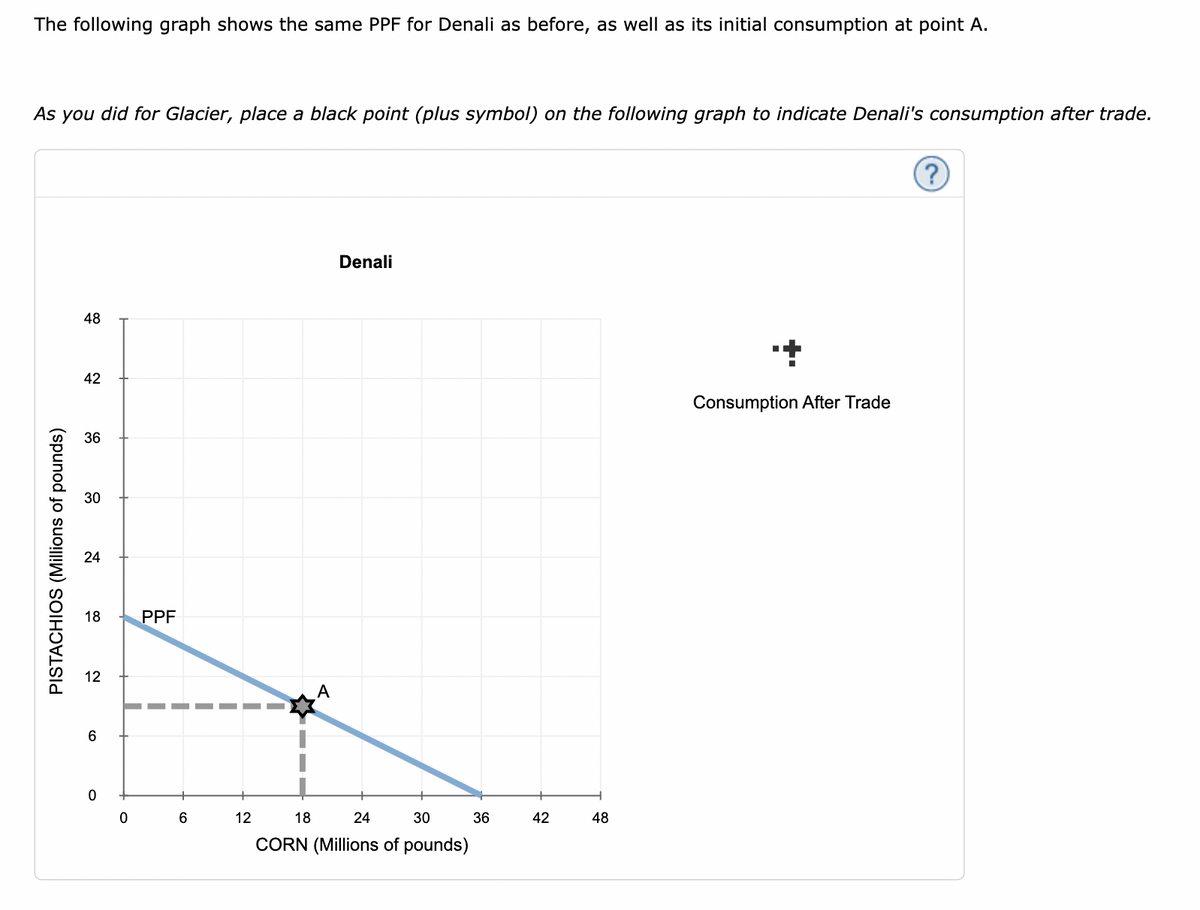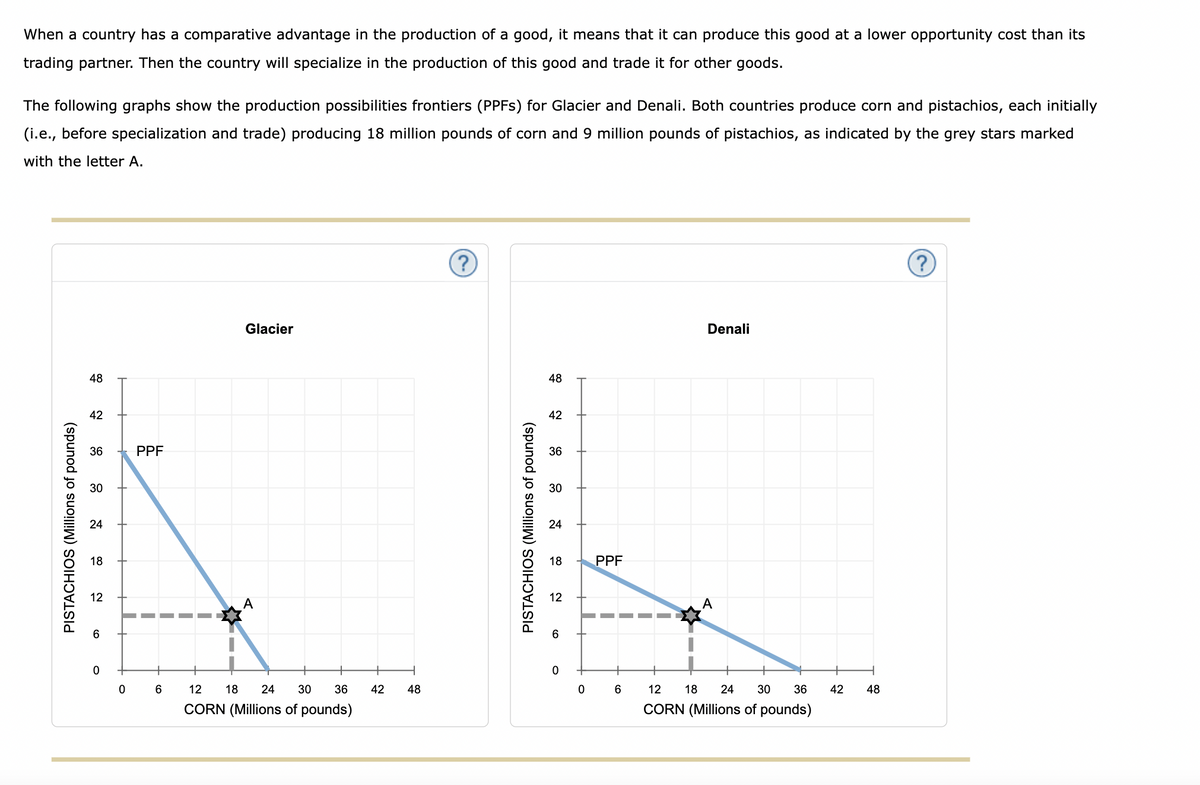The following graph shows the same PPF for Denali as before, as well as its initial consumption at point A. As you did for Glacier, place a black point (plus symbol) on the following graph to indicate Denali's consumption after trade. PISTACHIOS (Millions of pounds) 48 42 36 30 24 18 12 6 0 PPF 0 6 12 A Denali 18 24 30 CORN (Millions of pounds) 36 42 48 Consumption After Trade ?
The following graph shows the same PPF for Denali as before, as well as its initial consumption at point A. As you did for Glacier, place a black point (plus symbol) on the following graph to indicate Denali's consumption after trade. PISTACHIOS (Millions of pounds) 48 42 36 30 24 18 12 6 0 PPF 0 6 12 A Denali 18 24 30 CORN (Millions of pounds) 36 42 48 Consumption After Trade ?
Chapter2: Productions Possibilities, Opportunity Costs, And Economic Growth
Section: Chapter Questions
Problem 7SQ
Related questions
Question
Suppose that Glacier and Denali agree to trade. Each country focuses its resources on producing only the good in which it has a

Transcribed Image Text:The following graph shows the same PPF for Denali as before, as well as its initial consumption at point A.
As you did for Glacier, place a black point (plus symbol) on the following graph to indicate Denali's consumption after trade.
PISTACHIOS (Millions of pounds)
48
42
36
30
24
18
12
6
0
0
PPF
I
6
12
Denali
18
24
30
CORN (Millions of pounds)
36
42
48
++
Consumption After Trade
?

Transcribed Image Text:When a country has a comparative advantage in the production of a good, it means that it can produce this good at a lower opportunity cost than its
trading partner. Then the country will specialize in the production of this good and trade it for other goods.
The following graphs show the production possibilities frontiers (PPFS) for Glacier and Denali. Both countries produce corn and pistachios, each initially
(i.e., before specialization and trade) producing 18 million pounds of corn and 9 million pounds of pistachios, as indicated by the grey stars marked
with the letter A.
PISTACHIOS (Millions of pounds)
48
42
36
30
24
18
12
6
0
0
PPF
6
Glacier
12
18 24 30
36
CORN (Millions of pounds)
42
48
?
PISTACHIOS (Millions of pounds)
48
42
36
30
24
18
12
0
0
PPF
I
6
|
Denali
12
18 24 30 36
CORN (Millions of pounds)
42
48
?
Expert Solution
This question has been solved!
Explore an expertly crafted, step-by-step solution for a thorough understanding of key concepts.
This is a popular solution!
Trending now
This is a popular solution!
Step by step
Solved in 3 steps with 2 images

Knowledge Booster
Learn more about
Need a deep-dive on the concept behind this application? Look no further. Learn more about this topic, economics and related others by exploring similar questions and additional content below.Recommended textbooks for you









Exploring Economics
Economics
ISBN:
9781544336329
Author:
Robert L. Sexton
Publisher:
SAGE Publications, Inc